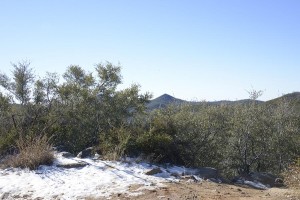 It had snowed in the local mountains late last month. By the time I got up there you could still find big patches of snow on the ground.
It had snowed in the local mountains late last month. By the time I got up there you could still find big patches of snow on the ground.
At the crest of the Laguna Mountains you can look down down down over the edge of the escarpment of the Elsinore Fault to the Vallecito Valley immediately below. It’s a quick vertical mile of dropoff, a height comparable to many vistas along the Grand Canyon. The change in elevation is impressive, but so is the radical change in landscape. A fairly well-watered green-and-brown mountain plant community–think pines, ceanothus, mountain mahogany–careens into a sere desert landscape, all of it in muted brown and purple and pink and gray tones. Down below the colors of geology quickly overpower those of biology. Someone who doesn’t love deserts might liken the descent into Anza Borreo Desert State Park as a descent into Hell.
On this early January day Hell was pleasant, in the low 70s, sunny and dry. Something I hadn’t visited before was a big installation of sculptures by Ricardo Breceda. Installed on a flat expanse on the edge of Borrego Springs you’ll find a rusty steel menagerie of various creatures. I recognized the camels and horses, including this horse with an unfortunately-placed support column.
(Note to artist: It is possible to model rearing horses without rectal probes, as this sculpture of Archduke Charles in Vienna’s Heldenplatz shows. (Photo by Peter Gerstbach and used here by the terms of the GNU Free Documentation License.))
I recognized some of the creatures but a few started to get pretty fanciful, like they’d escaped from a Maurice Sendak picturebook.
This one had either just lost its head or was still in the process of being installed.
Headless or not, it was scaring the horses…
And what the heck is this creature supposed to be? Whatever it was, it appeared to be mom with a little one on her back.
And now we come to the dragon, a big and fancy and fearsome number with five different segments that go from one side of the road to the other. (Edit January 20: Ricki points out that it’s probably a sea serpent and not a dragon, and I agree with her.)
Here one of the segments functioned as a really lovely little garden portal.
But in the end the most fearsome thing of all out in the desert that day wasn’t the dragon, but this “jumping” cholla cactus, one of the local Cylindropuntia species (maybe C. ganderi?). I’ve never been hurt by a dragon, but this bit of botanical evil is a different story. Be afraid, be very afraid.

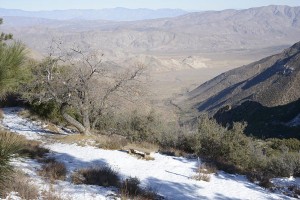
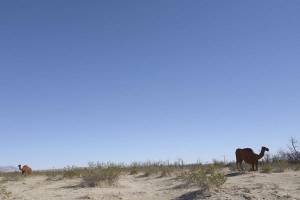
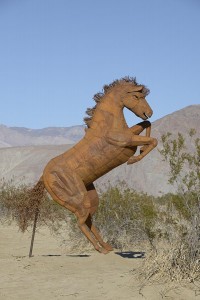

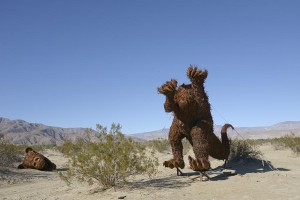
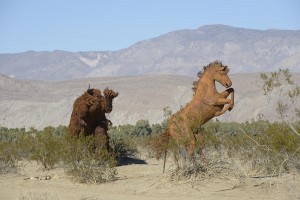
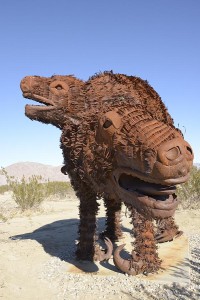
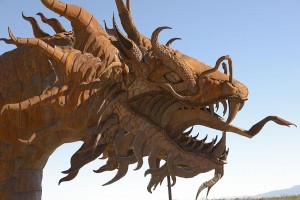
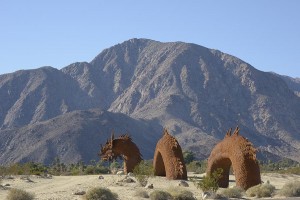
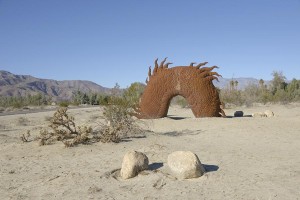

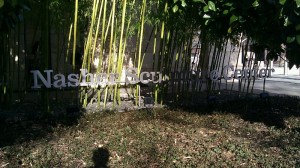
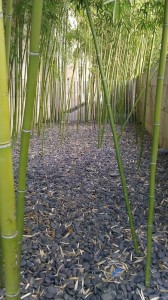
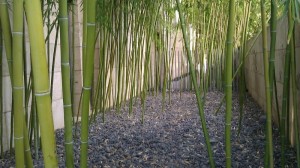
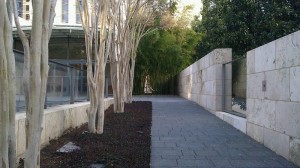


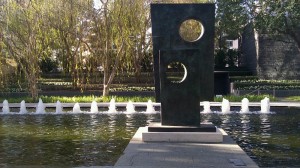
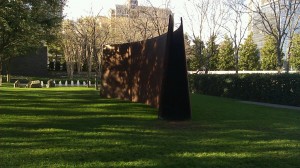


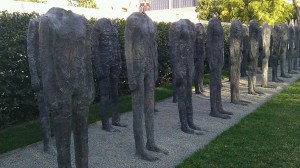
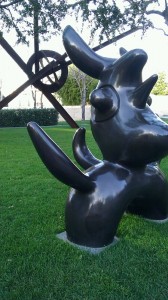
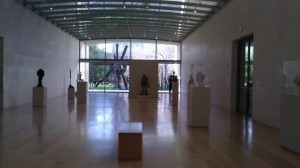

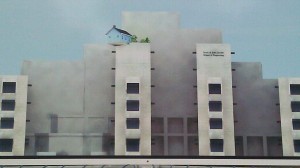
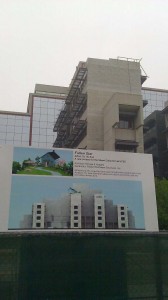

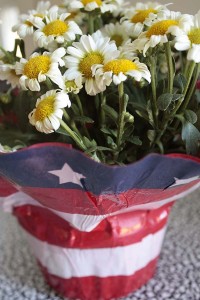


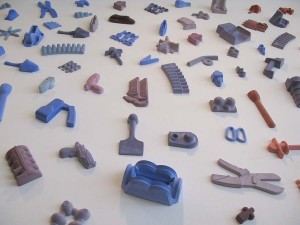

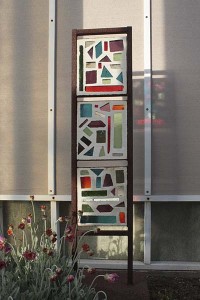


 Mary Catherine Newcomb. Molded eggplant from Product of Eden [
Mary Catherine Newcomb. Molded eggplant from Product of Eden [